







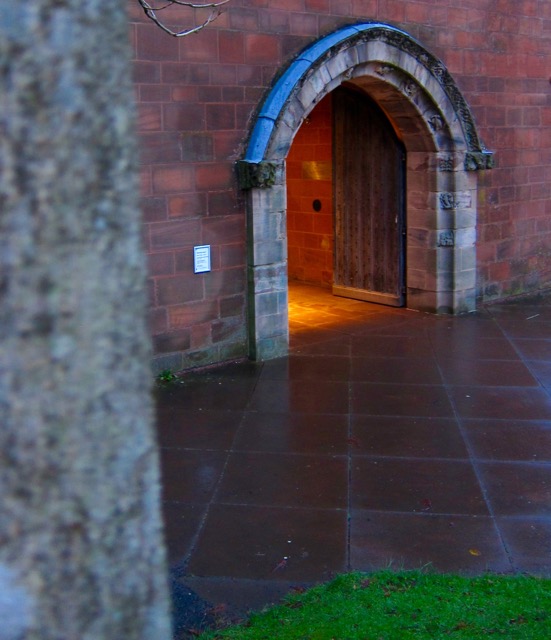

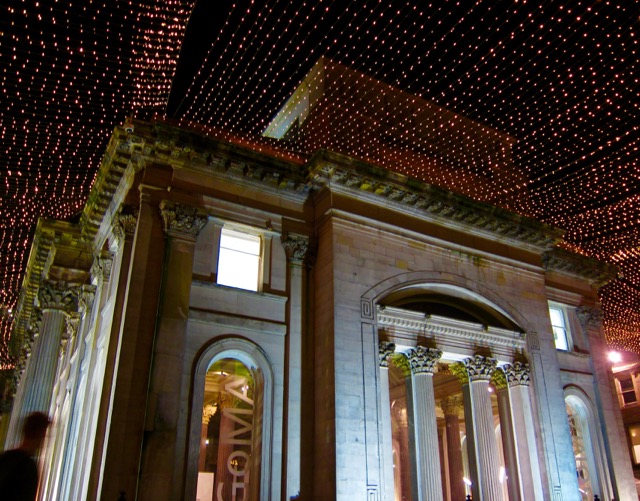
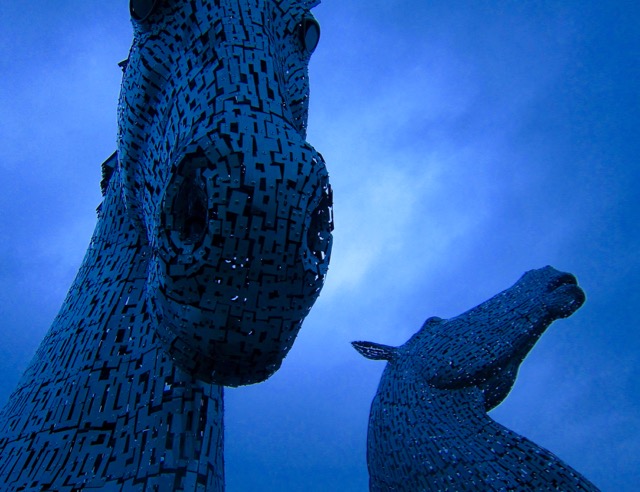
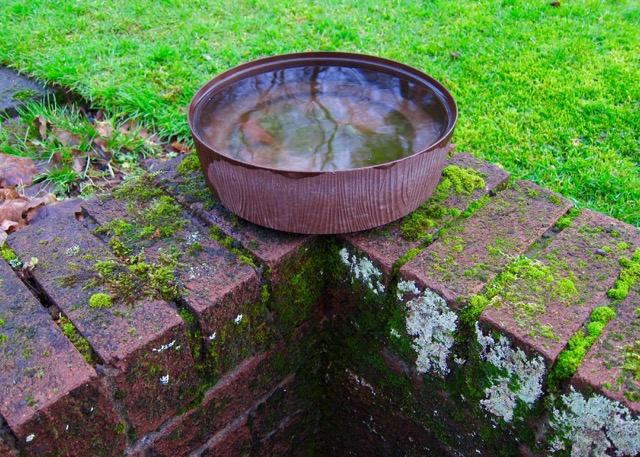
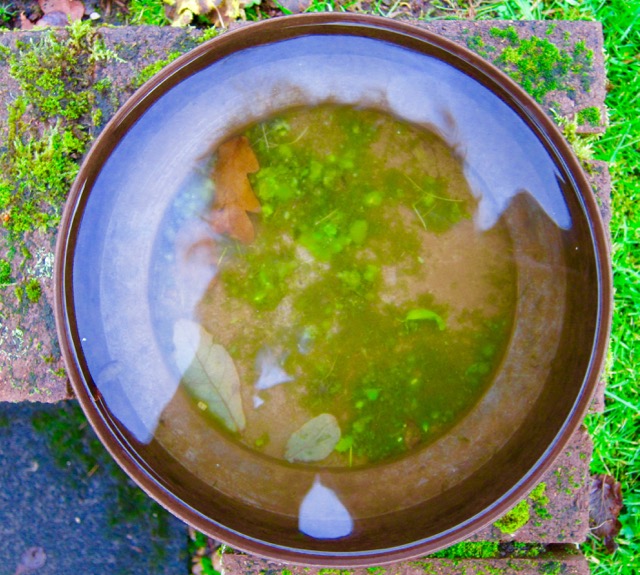
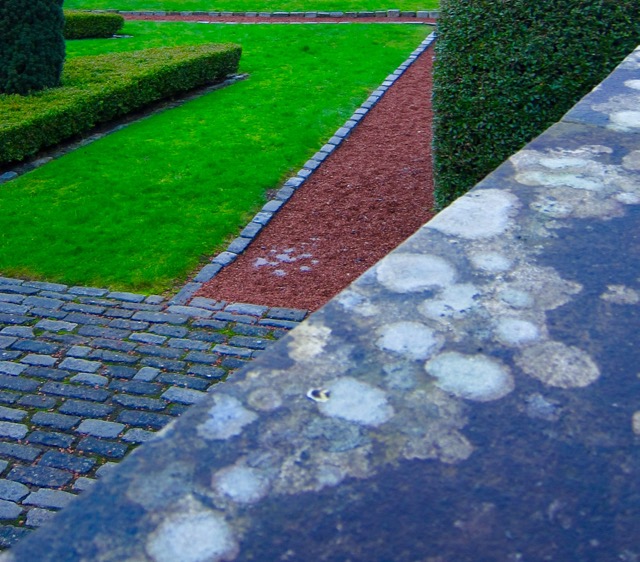
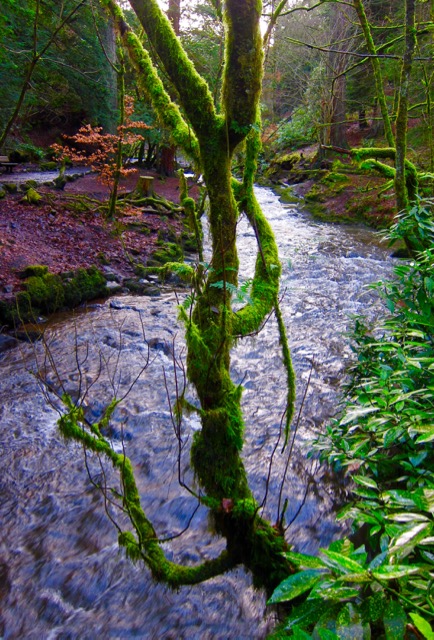
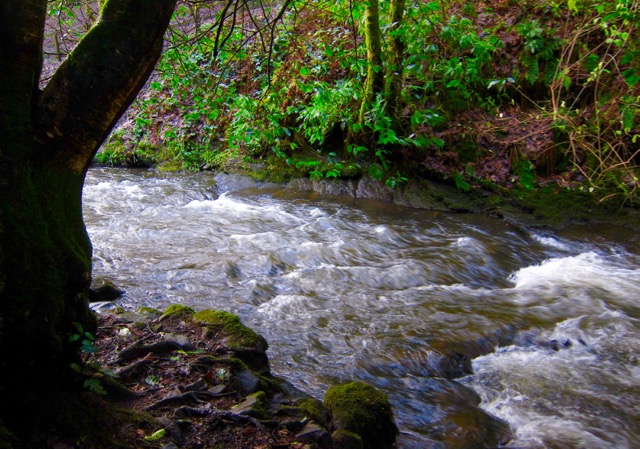

Response to the Tapir’s Night Journey Downstream
Transitions define my body.
Look how the current splashes my legs turquoise,
the moon silks my chest,
and wild solitude cools my nimbus to blue, white, and lavender.
Behold the purple eye that guides my canoe down the Amazon,
riding the night rapids in a dream of passages, openings, and
confluence.
And see how curving shapes in the dark transport me to waterways
that empty into wider and wider rivers
until the open Atlantic receives my vessel at journey’s end.
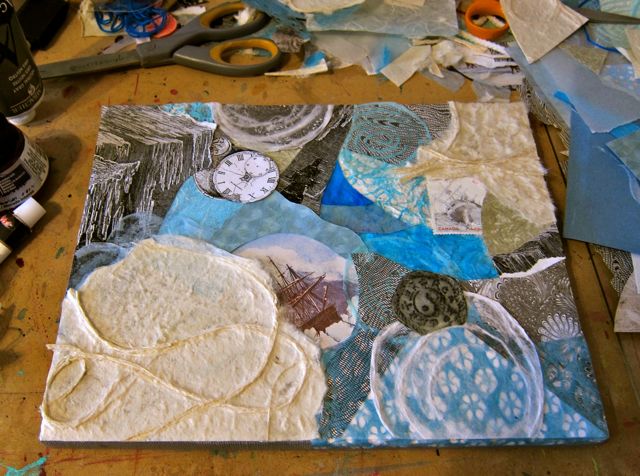
In this collage series inspired by sea and river voyages, shipwrecks tilt on the ice, abstract shapes go swimming, and an arctic hare chews on a twig. Meanwhile, a famous Norwegian explorer inhabits a turnip-shaped kayak, and a tapir chooses a canoe for his journey downstream.


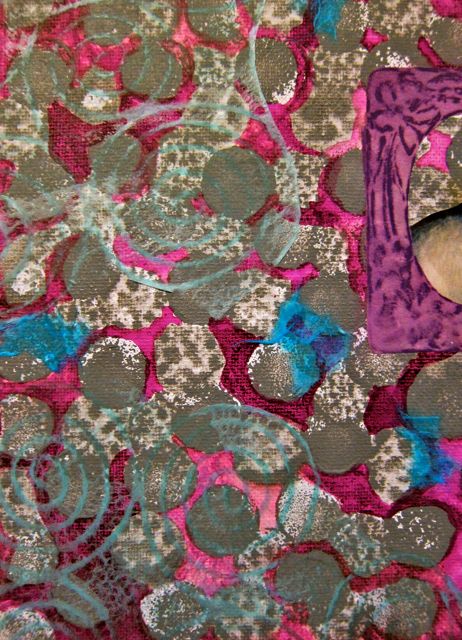

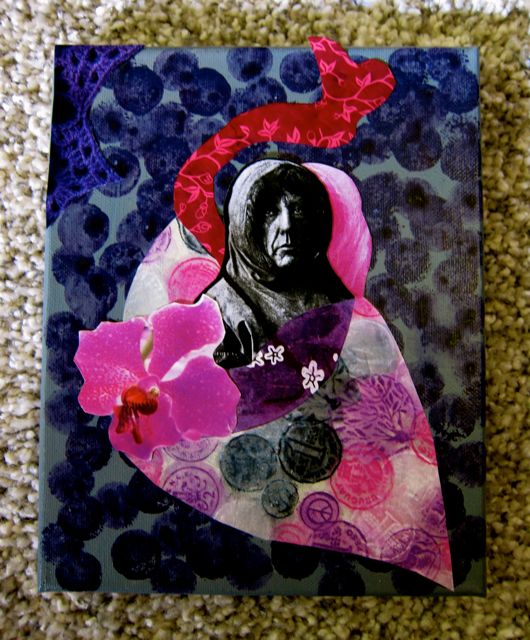
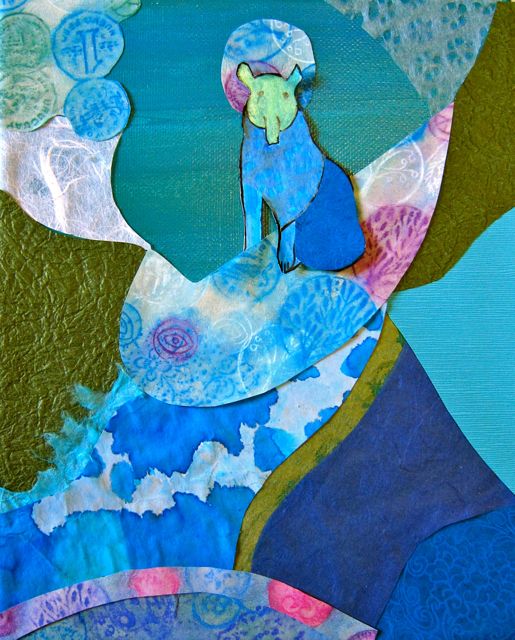

(This collage has a poem to accompany it!)

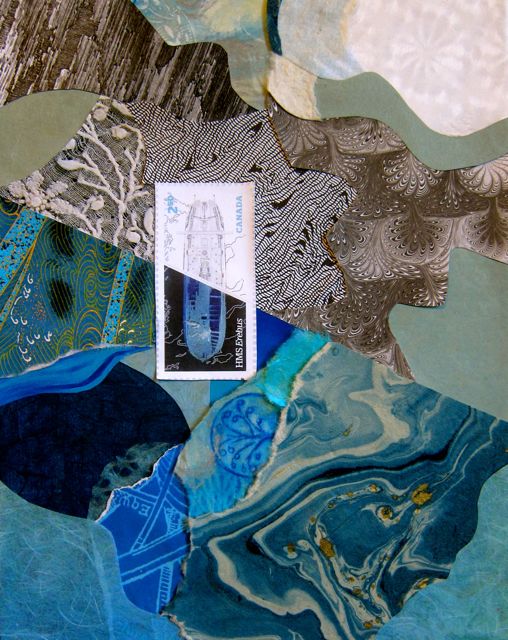

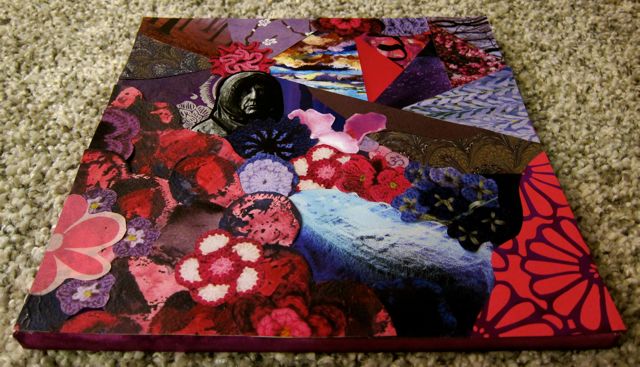

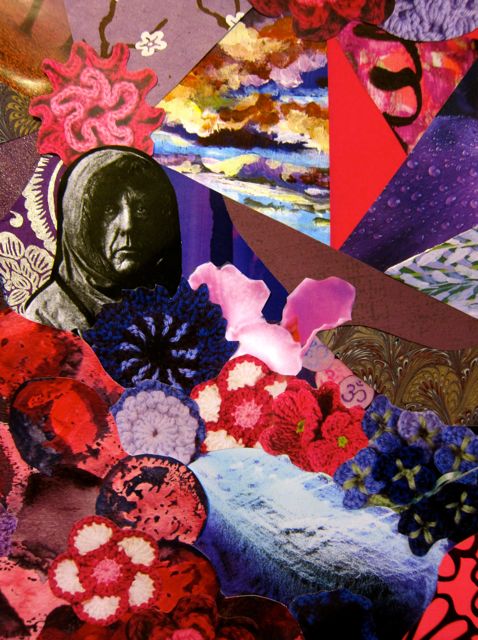
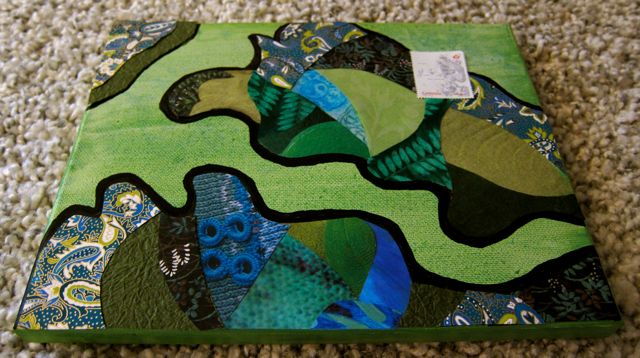
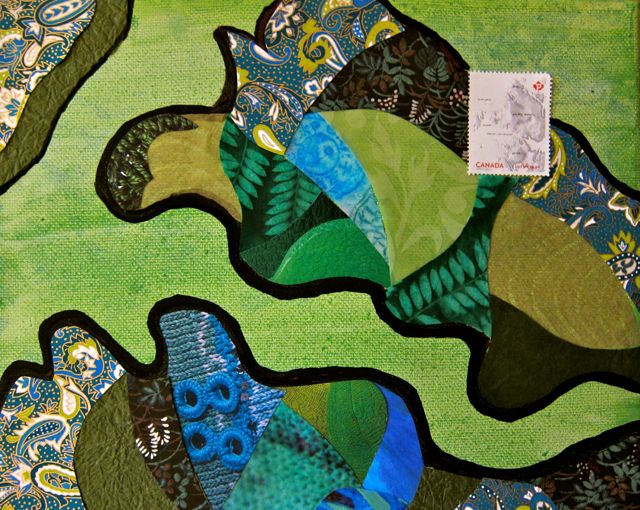
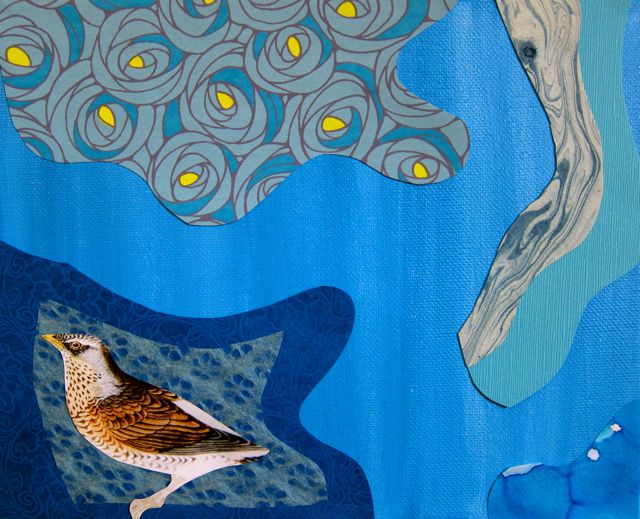




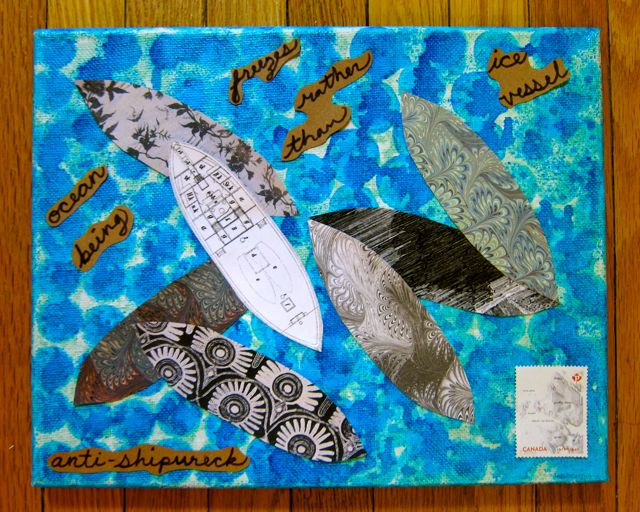
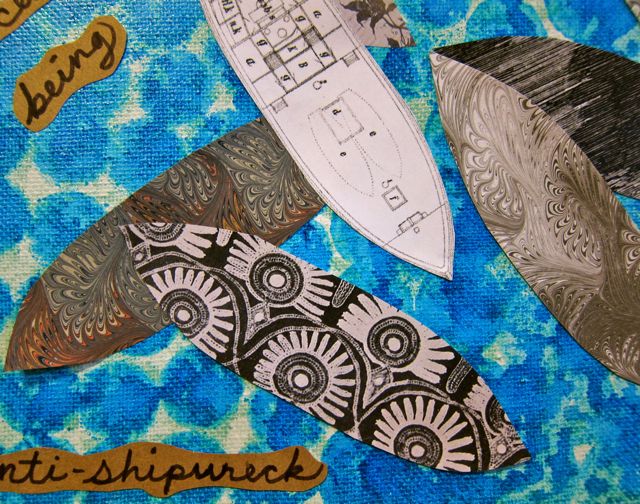

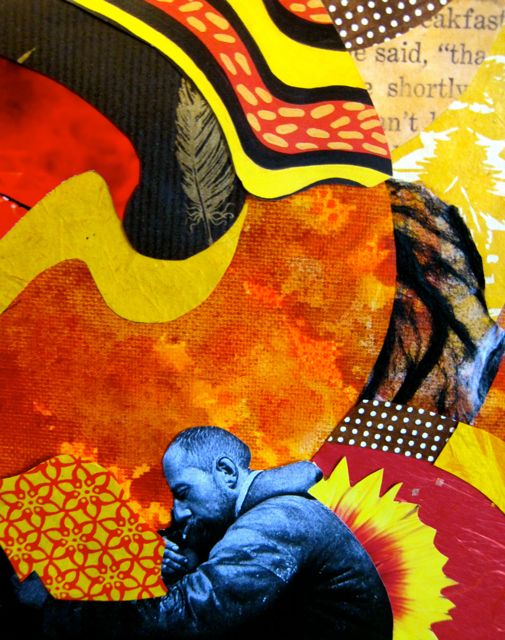
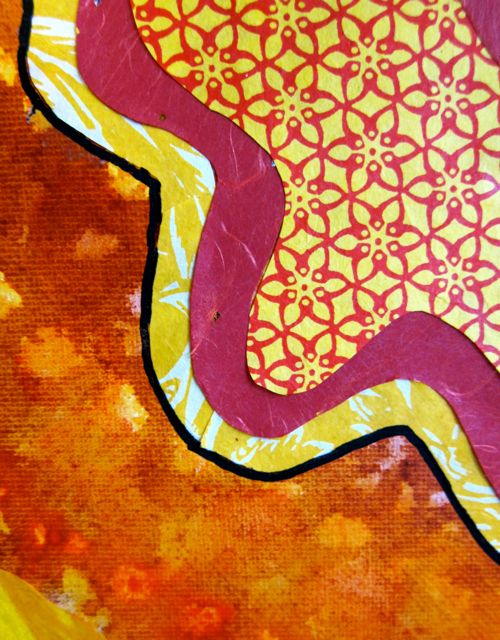

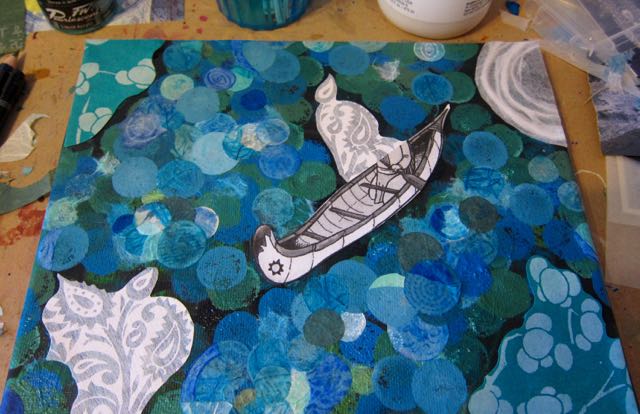







From the depths of keepsake piles in my mother’s house emerged a Father’s Day card and a birthday gift that I made in the 1970’s. 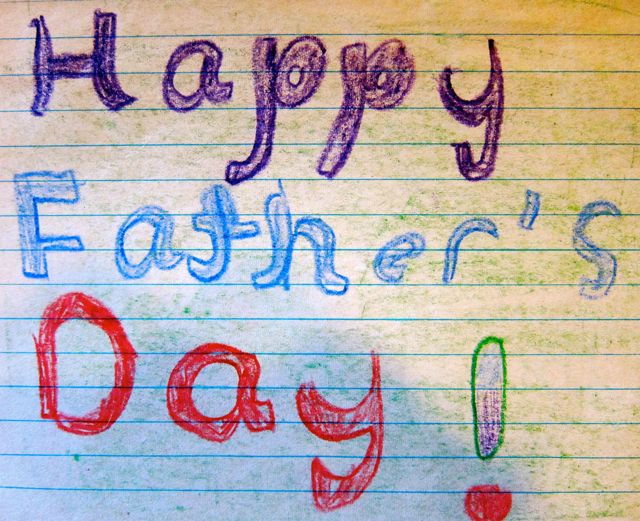 The inside of the Father’s Day card contained a car and some of my thoughts.
The inside of the Father’s Day card contained a car and some of my thoughts.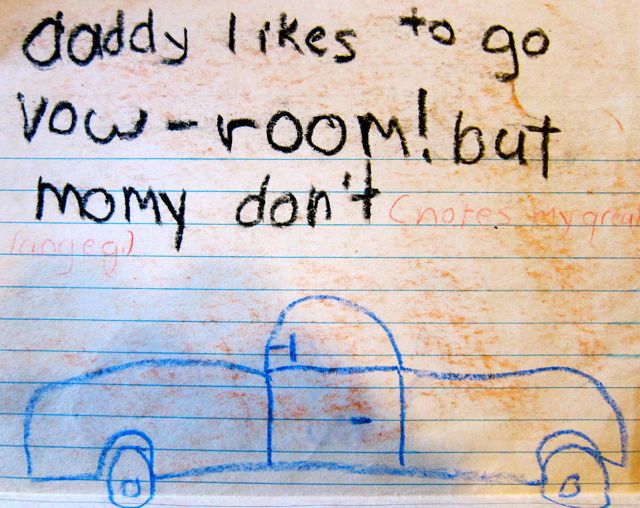
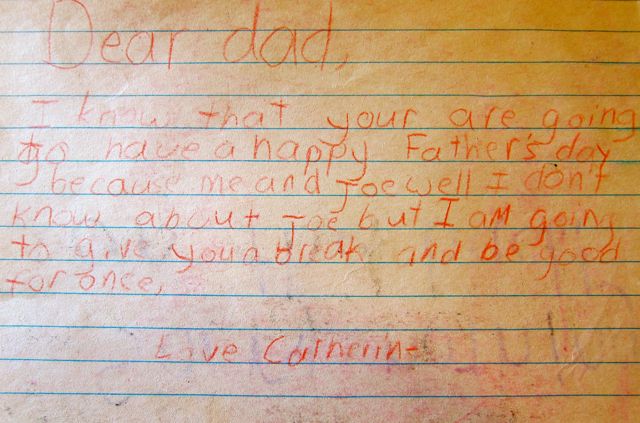
 The Father’s Day message became the centerpiece for a recent collage in his honor.
The Father’s Day message became the centerpiece for a recent collage in his honor.
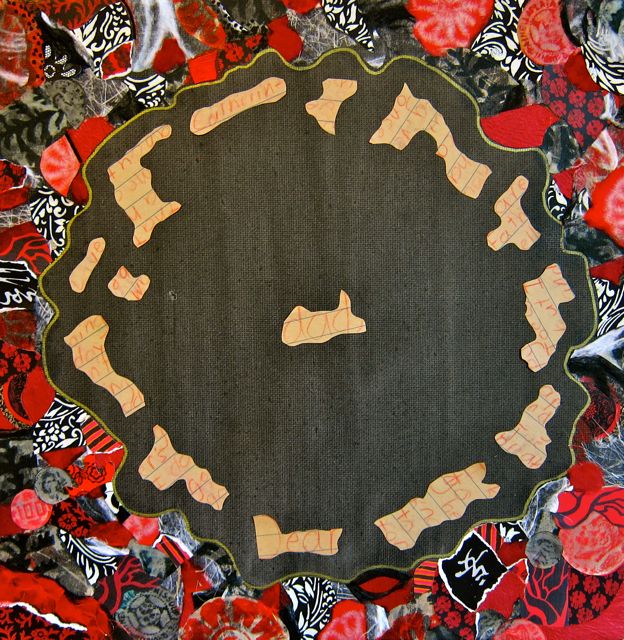
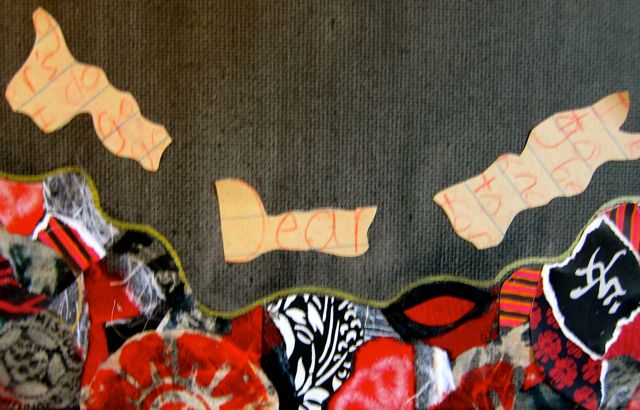

The second piece of 1970’s ephemera was a birthday gift for my dad. It was a hand-taped envelope made from lined notebook paper that contained watches that I’d cut out from magazines. (The coffee stain is original).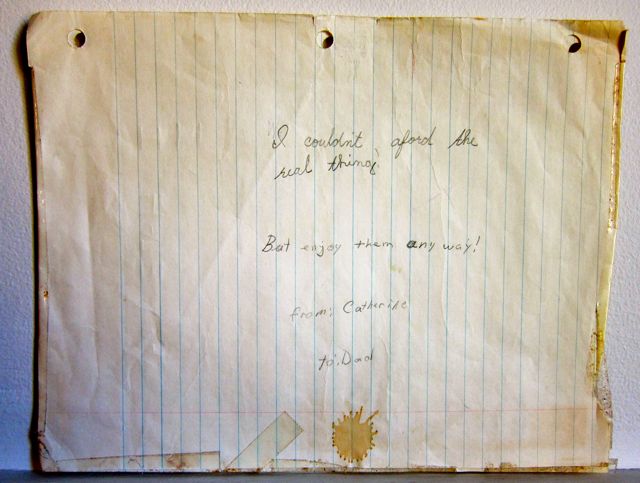
 The long-ago selected watch photos and text from the card inspired a second collage for my father.
The long-ago selected watch photos and text from the card inspired a second collage for my father.





Dad, thank you for keeping the cards that I made for you so many years ago. And thank you most of all for being such a fun, supportive, and loving father. I miss you!
When I descended the steps at the beginning of a three-hour trek from Taylor Massey Park to the Don River Valley, a multitude of surprises awaited me.

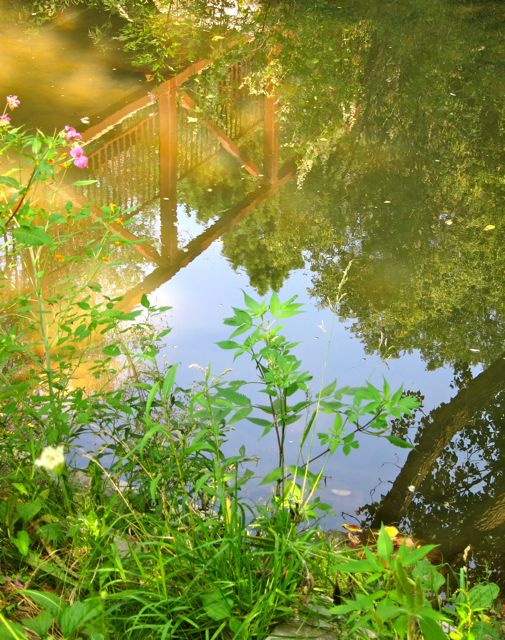 Along the trail, I discovered green palaces reflected in the creek, a memorial bench wreathed in wildflowers, animal sculptures carved from a fallen tree, and the sight of a chipmunk speeding to its burrow.
Along the trail, I discovered green palaces reflected in the creek, a memorial bench wreathed in wildflowers, animal sculptures carved from a fallen tree, and the sight of a chipmunk speeding to its burrow.
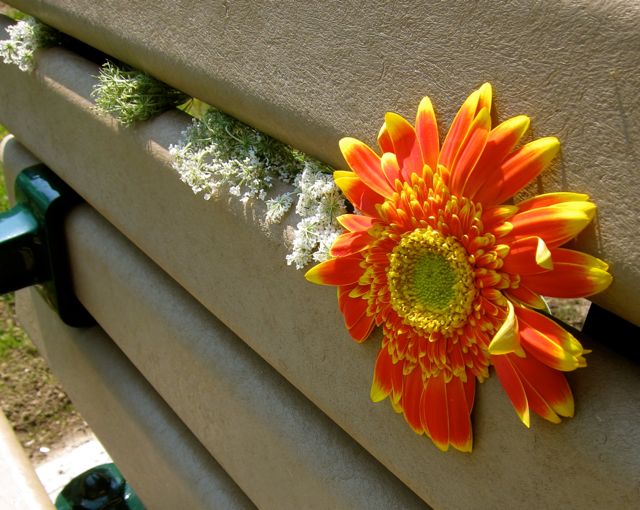
 Flowers and chains framed the beauty of the stream, and wavy reflections of tree trunks served as pillars for a temple of nature.
Flowers and chains framed the beauty of the stream, and wavy reflections of tree trunks served as pillars for a temple of nature.
 The first trail marker for the Lower Don appeared after an hour and fifteen minutes of walking. This was exciting because I had never witnessed the transition from Taylor Massey Creek to the Don River before.
The first trail marker for the Lower Don appeared after an hour and fifteen minutes of walking. This was exciting because I had never witnessed the transition from Taylor Massey Creek to the Don River before.

Much as I love the sheltered flow of a woodland creek, the impact of seeing the waterway widen and deepen in capacity astonished me. My chest expanded, my breath deepened, and I felt freer, bigger, and more open.

 Ten minutes into the Lower Don section of the walk, I noticed a short dirt trail leading to a lookout on an elevated bank. With the camera looped around my wrist, I fell into a reverie while looking at the opaque water and began to daydream about the Missouri River (my home river). Suddenly, a very large pink and white fish jumped high above the surface and splashed with panache back into the river.
Ten minutes into the Lower Don section of the walk, I noticed a short dirt trail leading to a lookout on an elevated bank. With the camera looped around my wrist, I fell into a reverie while looking at the opaque water and began to daydream about the Missouri River (my home river). Suddenly, a very large pink and white fish jumped high above the surface and splashed with panache back into the river.
I was so startled that I almost dropped my camera. However, I was not upset in the least, for it was a privilege to have been shaken up by that feisty fish. Its breathtaking leap made me feel alive and gave me hope for the health of the river.
 Tired but refreshed by so much beauty, I continued the journey, noticing a family of geese, graffiti murals at the base of a soaring bridge, and an artist painting a shimmering river portrait in olive green, brown, and ocher.
Tired but refreshed by so much beauty, I continued the journey, noticing a family of geese, graffiti murals at the base of a soaring bridge, and an artist painting a shimmering river portrait in olive green, brown, and ocher.
 Near the end of the hike, I encountered historic Todmorden Mills at the foot of a steep incline up Pottery Road. I had almost reached the top of the hill, panting from exertion and the extreme heat, when the final surprise of the day greeted me: a Dairy Queen right at the summit!
Near the end of the hike, I encountered historic Todmorden Mills at the foot of a steep incline up Pottery Road. I had almost reached the top of the hill, panting from exertion and the extreme heat, when the final surprise of the day greeted me: a Dairy Queen right at the summit!
In my personal history of ice-cream consumption, never has a plain vanilla cone tasted as good as the magical one purchased on Pottery Road that afternoon. It was the perfect ending to an adventure made possible by Toronto’s generous creeks, powerful rivers, and unpredictable wildlife.
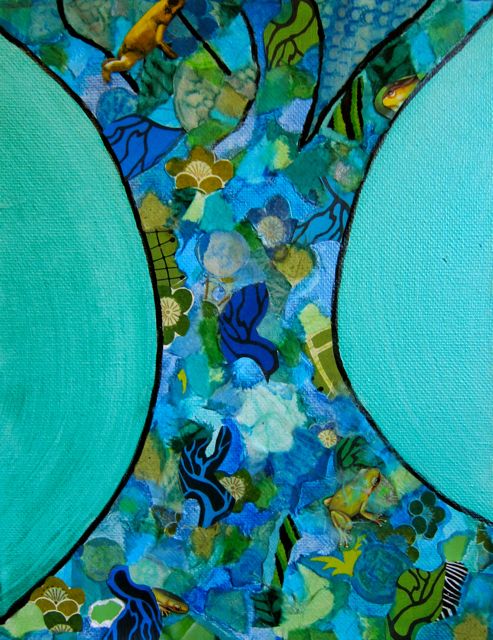
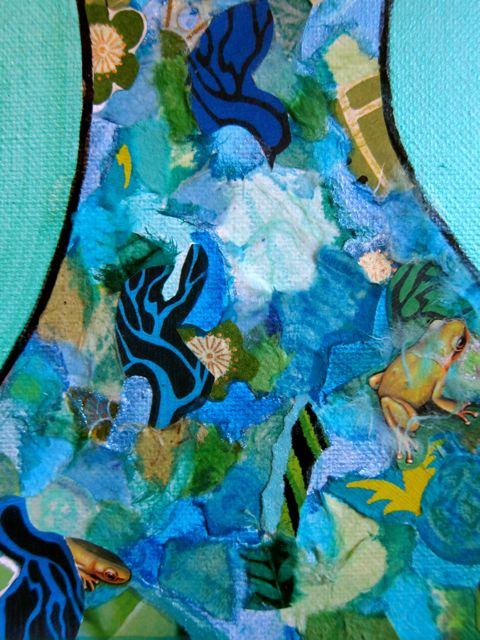
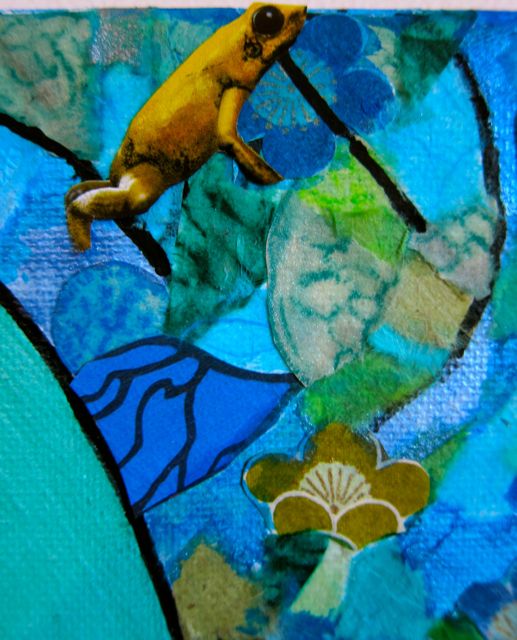
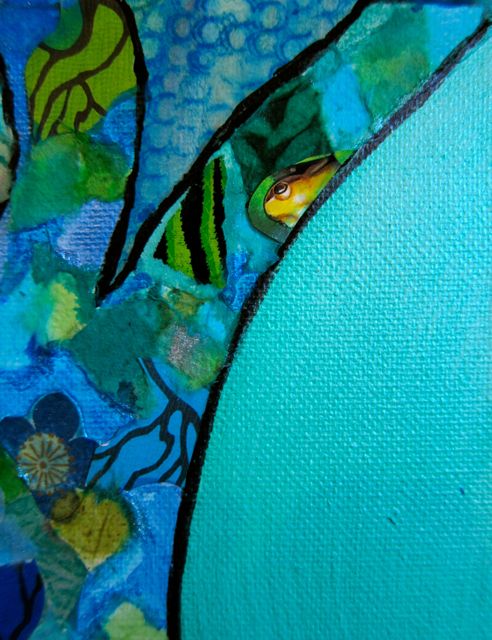
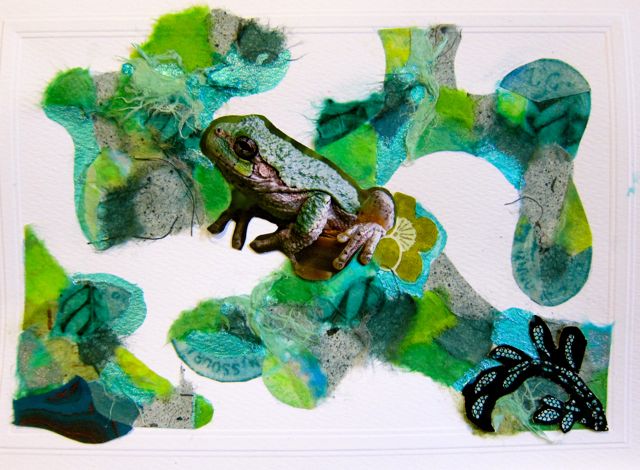


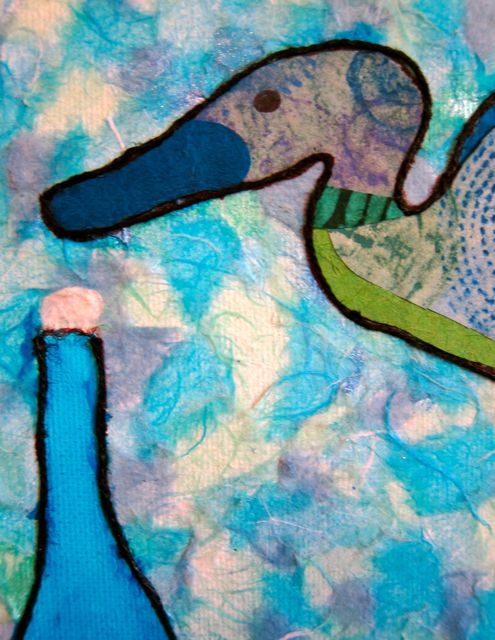
A visit to Haliburton Wolf Sanctuary was one of the highlights of a recent family vacation to central Ontario. We were fortunate to see so many wolves from the observatory last Wednesday because the pack could have decided to hang out elsewhere within their 15-acre enclosure.

Beside Deer Lick Creek, I saw a hare bound across an iron footbridge and a giant tree that had snapped in two when it fell in the water. Pausing my walk, I stood on the bank to study the tree. The distance between severed stump and trunk was not great, but the liquid space between the two jagged ends took my breath away with its beauty. How could the fallen, the broken be so beautiful?
The distance between severed stump and trunk was not great, but the liquid space between the two jagged ends took my breath away with its beauty. How could the fallen, the broken be so beautiful?
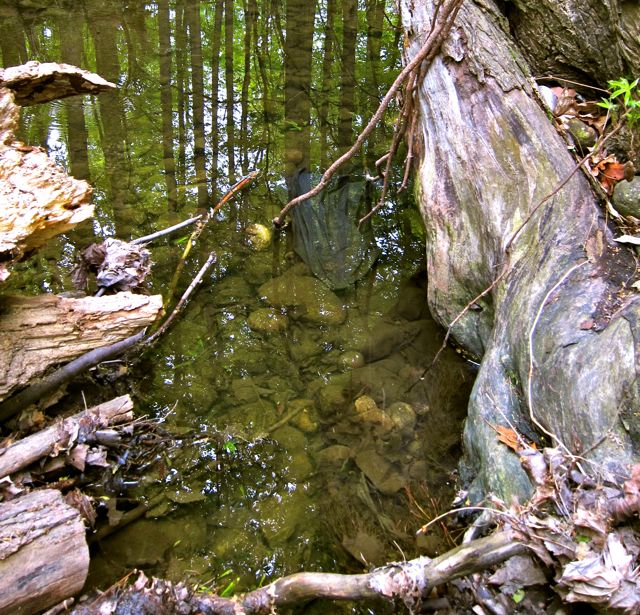 I loved how the brook filled the void of disconnection and death, blessing an abyss with a measure of peace. The slow movement of water, the round stones on the creek bed, and the reflections that animated the skin of the creek, they all witnessed loss and grief with grace. They comforted me.
I loved how the brook filled the void of disconnection and death, blessing an abyss with a measure of peace. The slow movement of water, the round stones on the creek bed, and the reflections that animated the skin of the creek, they all witnessed loss and grief with grace. They comforted me. That tree died, but beauty didn’t die. It just changed. A whole tree, intact, thriving, with glossy leaves is beautiful. But a broken tree with only half of its body still rooted in a muddy bank is gorgeous too.
That tree died, but beauty didn’t die. It just changed. A whole tree, intact, thriving, with glossy leaves is beautiful. But a broken tree with only half of its body still rooted in a muddy bank is gorgeous too.
 The shocking break is an opening for time, change, and water to move — not to take the pain away but to lovingly acknowledge its impact. The broken edges can breathe into that forgiving emptiness, exposing their ache to the kindness of night.
The shocking break is an opening for time, change, and water to move — not to take the pain away but to lovingly acknowledge its impact. The broken edges can breathe into that forgiving emptiness, exposing their ache to the kindness of night.
Even though I never met David Oliver in person, his larger-than-life presence on Facebook made a deep impression on me. Through a hometown connection to his son Brad, I learned about David’s efforts to create a compassionate model of end-of-life care. I also discovered how much Brad and David adored the band Rush after a double-strength dose of Oliverian charm persuaded me to send both men Rush stamps from Canada in 2013.
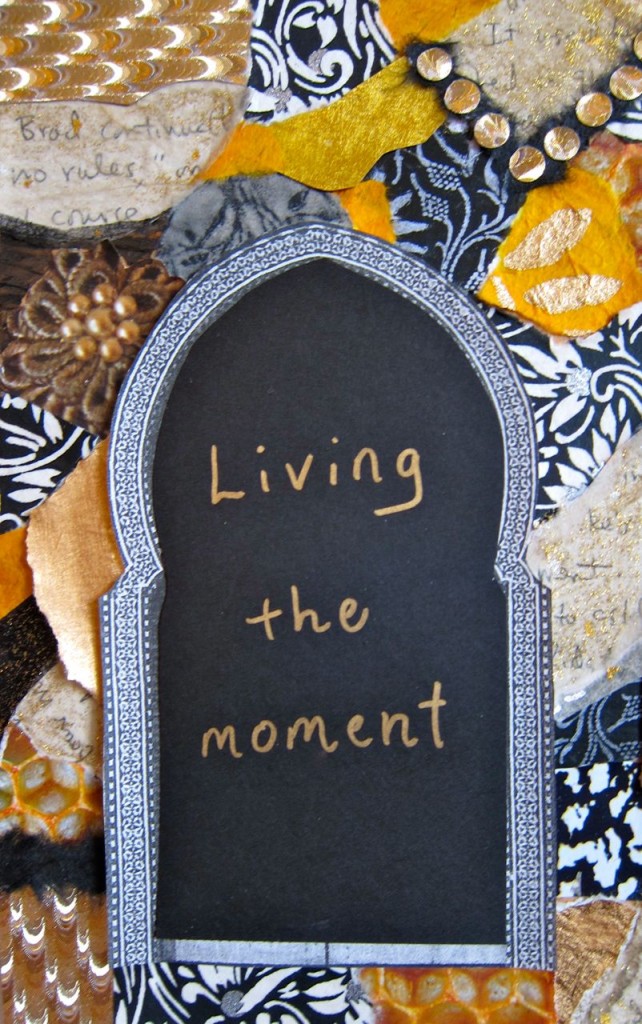
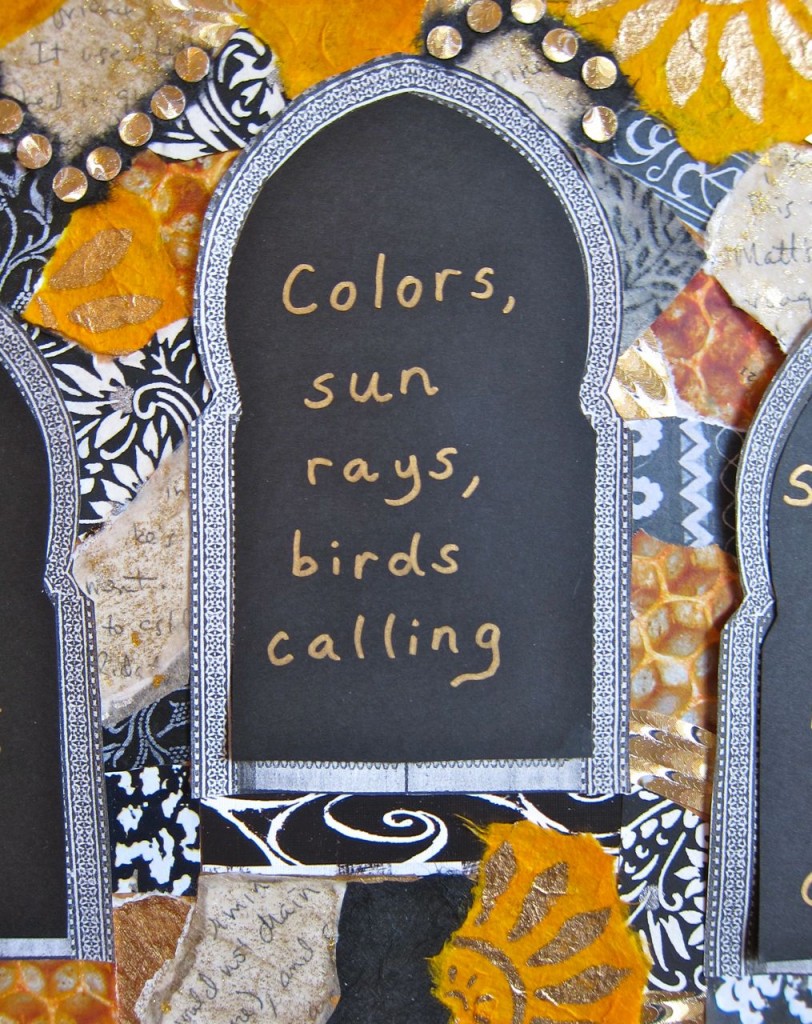
Both in death and in life, David has inspired me, and I hope this collage can effectively reflect his love of travel, nature, family, and the Missouri Tigers (hence the black and gold color-scheme).
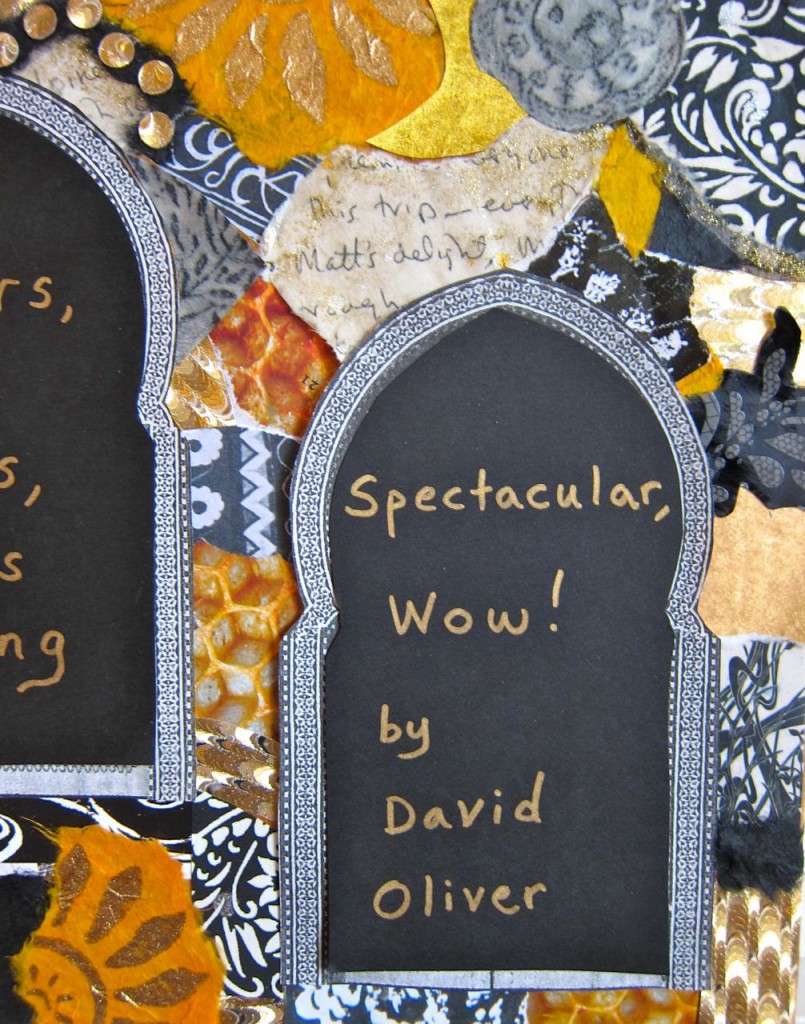
Brad told me that haiku was one of David’s favorite poetic forms, and the three arches (a reference to trips to Istanbul) contain one line each from a haiku of David’s. May “Living the Moment” do justice to a brave man who embodied the art of living with cosmic joy and unbridled enthusiasm.
Niagara Falls, you deliver glory and awe this winter! Heaped with snow, giant cracks sever the river-ice below you, a survivor of mythic battles: water versus freezing air, movement versus paralysis, and the struggle to break free, break through, break open.
I love the edges of your ice banks, the borders of upheaval against which green swirling cauldrons steam, pool, and hiss. I love the seams of blue ice and the irregular holes in the ice-lid, especially the one beside the north bank and the other in the center of the river.
Niagara Falls, I love your giant ice sculptures, their humps, swoops and Matisse shapes. These small glaciers settle me into the soul of winter, birth echoes of the Great Lakes, great pools of ancient melted ice cupped by basins. This water, this ice so old and yet so fresh, sluices clean through me and gives me peace, ice peace.
As a mostly self-taught collage artist, I had never studied the medium formally until I took an eight-week course this fall. I am so grateful I decided to attend Donnely Smallwood’s class at the Toronto School of Art, for it helped me look at collage through fresh eyes and taught me new techniques.




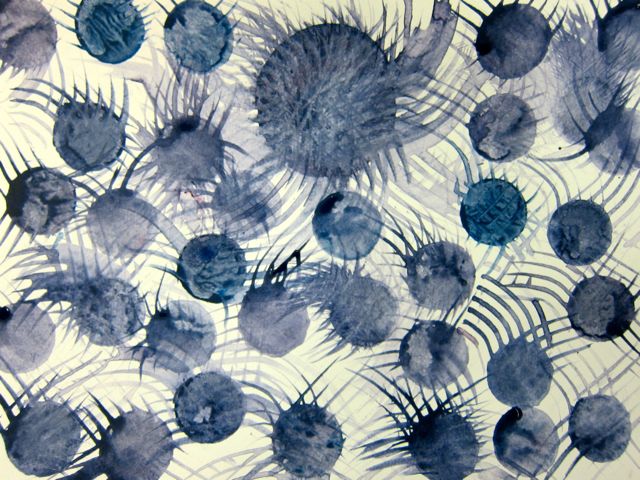
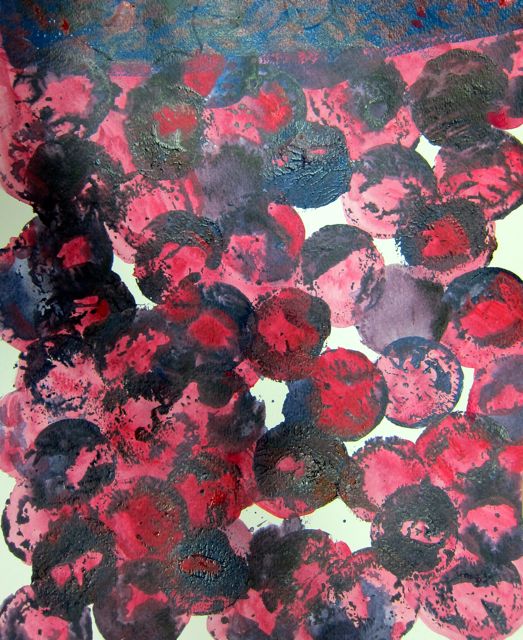




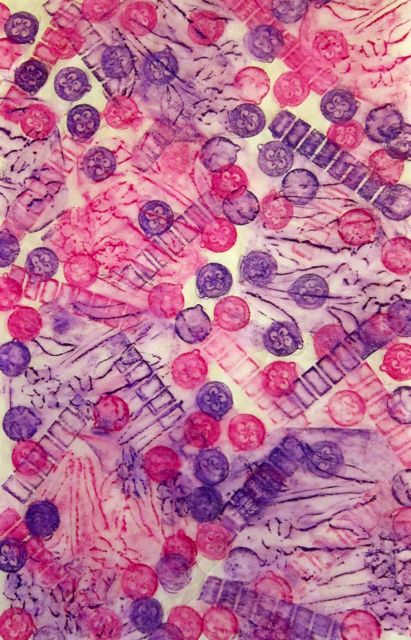


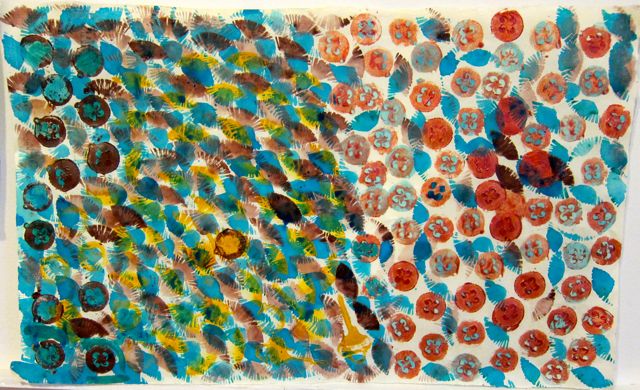
















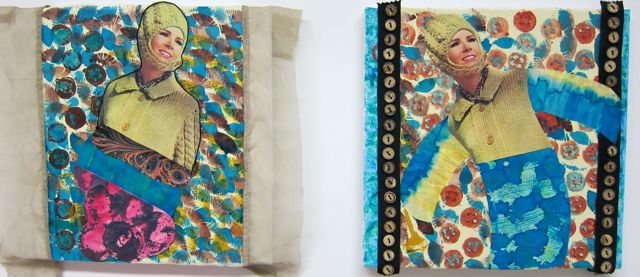
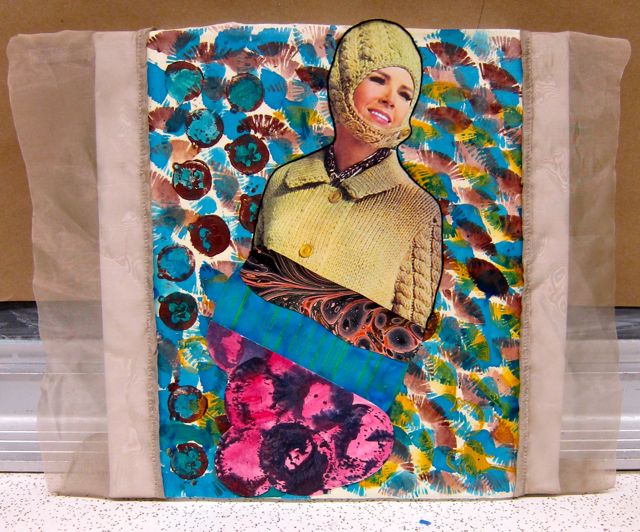












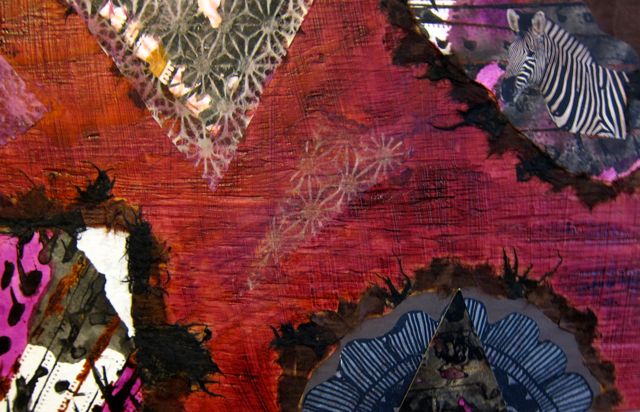




I have been attending Holocaust Education Week talks at the Toronto Public Library since 2010, but this year was the first time I listened to a program in French. It took place in a full auditorium at the Toronto Reference Library.
Even though I failed to catch about 30% of Edith (née Schwalb) Gelbard’s testimony, her engaging, warm presence did not need words to communicate strength. With elegant ease, the 82-year-old grandmother of nine captured the attention and affection of a lively crowd of teenagers from two French-immersion high schools in the city.
For example, when she introduced a surprise guest, a long-lost friend from the 1940’s, the audience let out a long “Awwww!” in unison at the sight of her planting a kiss on his forehead. The teens’ reaction was equally responsive when Ms. Gelbard showed pictures of her family who had fled Vienna in 1938 for Belgium and later from Belgium to France in 1942. Edith and her older sister Therese were joined by a baby brother while the family was in Belgium, and a picture of little Gaston elicited another enthusiastic chorus of “Awwww!” from the crowd.
As narrated in Hiding Edith by Kathy Kacer, Edith and Gaston were sent to a boarding house in the southern French village of Moissac in March of 1943 (p. 30). (Because some details eluded the grasp of my intermediate-level French, I have relied on Kacer’s book to fill in the gaps).
Shatta and Bouli Simon, a couple affiliated with the Jewish Scouts of France, managed the safe residence from 1939 until the post-war years (Kacer, pages 35 and 38). The efforts of the Simons and “toute la ville” of Moissac protected the Jewish children in their care by keeping the safe house a secret, thus saving hundreds of lives (p. 151). During her talk, Edith praised Moissac as a “Ville de Juste.”
While Edith sheltered at the residence in Moissac, she went to school in the village, made friends with other ten-year-olds, performed her assigned chores, and learned camping skills. The lessons in knot-tying and tent assembly were not for recreational purposes; they prepared the children for Nazi raids. Each time the mayor of Moissac warned the Simons that a raid was imminent, the children went to Camp Volant — Flying Camp — to escape to the countryside until the danger passed, moving “to a different location every night, in deep thick woods offering shelter and cover” (p. 80).
By August of 1943, deteriorating conditions in France led to the realization that it was no longer safe for the children to stay in Moissac (p. 89). Heartsick at having to flee again, eleven-year-old Edith was transferred to a Catholic boarding school in Ste-Foy-la-Grande, which meant assuming a new name, pretending she was an orphan, and attending church in the village every week, all the while guarding her true religious identity. In the new hiding place, she suffered from hunger, lice, the constant terror of discovery, and bombing raids. “C’était dur,” Edith said.
In the summer of 1944, Edith was moved to a farm to escape the frequent bombing of Ste-Foy-la-Grande. She stayed on the farm with a kind family until she reunited with her mother, sister, and brother in September of 1944. In 1945, she heard that her father had died of dysentery caused by overtaxing his starved body with food after the Americans liberated Auschwitz. Turning loss and grief to social service, Edith continued to help the Simons in Moissac until 1949, and six years later she immigrated to Canada (p. 144).
Listening to Edith Gelbard’s testimony reminded me that the highest call of humanity is the imperative to shelter and protect the vulnerable from brutality. Edith’s willingness to speak about her unspeakable trauma models the courage we need to fight fascism, tyranny, and hatred. Her testimony is a call to create Villes des Justes in our hearts, our communities, and throughout the world.

When the Berlin Wall fell in November of 1989, I had recently arrived at the University of Durham for a junior-year-abroad experience. In April 1990, I flew from England to West Germany to visit my friend Bart, a fellow sociology major from a small college in Missouri. After a few days touring Heidelberg, we took a train to Berlin.
Unprepared for the shortage of rooms in this swelling city, Bart and I had to spend our first night in bunk-beds at the train station’s BonHof mission. My pocket-sized journal (slightly edited for clarity) tells the story of the following day and its endless night, starting with a visit to the remains of the Berlin Wall and ending up in East Germany on the steps of the Berliner Dom.

April 10-11, 1990
Early morning Berlin contains East Germans toting piles of DDR currency, Polish people stockpiling electronic goods, Turkish men selling pineapples and kiwis, and Americans chipping at the Berlin Wall with chisels. A Turkish boy gives Bart and I bits of the wall and then climbs behind it to collect more fragments.
I see an East German flag with its communist sickle as we walk beside the wall from Potsdamer Platz to Tiergarten. Foreigners have spray-painted “Fuck the Poll Tax” and “And the Wall Came Tumbling Down” on the vertical concrete. There’s a Roosevelt quotation about glorious victory in neon orange, and someone has crossed out Gorbachev in “Thank-you, Gorbachev” and replaced it with Reagan’s name.

After shuddering at the sight of Hitler’s bunker, Bart and I duck through a hole in the wall and attract some negative attention from an East German guard, who barks “Raus!” As he approaches on his motor bike, scattering the Americans along that part of the wall, it suddenly seems a good time to go admire the Brandenberg Gate. Afterwards, as we walk east along Unter den Linden, we see Soviet tanks by their embassy and a muscular Russian soldier on top of one of them.

The monument with gold Germania on top attracts us, so we climb it, first looking at the mosaic on the middle of the column. Once we recover from the vertigo caused by climbing so many narrow steps, we take in the panorama of Berlin at the very top. Then we clomp down and Bart goes off to the bathroom, leaving me on the steps to comb my hair and play with the ants in the sun.
As we pass statues of Goethe and Bismarck, I start to worry aloud about where we are going to sleep that night. So Bart goes into a phone booth to call an acquaintance who is living in Berlin. Maybe we can sleep on his floor. Surely he knows how desperately crowded the city is and take pity on us.
While Bart is trying to secure shelter, I wait on a nearby bench. Suddenly, an agitated American matron in a multicolored Day-Glo jacket comes out of another phone booth and gestures at me wildly. She shouts, “Do . . . YOU . . . speak . . . ENG . . . lish?”
Eager to help, I say “Yes, I do” and go over to her booth. She hands me the receiver and commands: “Tell . . . HIM . . . the . . . po . . . LICE . . . have . . . TAK . . . en . . . a . . . WAY . . . my . . . CAR!!!”
So I take the phone and obediently repeat, “The police have taken away her car.” Laughing and mad at the same time, she yells, “No, not in English! In German!”
The story of my mishap cheered Bart a little, but he was shaken by his friend’s refusal to host us. Eventually we had to just stay up all night, roving from McDonald’s, to Burger King, back to McDonald’s, then to the underground and finally the bus. We bought milk, hot chocolate, and small packets of fries to give us the temporary right to stay in the restaurants.
The moment we accepted our sorry condition, we started laughing on a bench outside Kaiser William’s church. Our plight was so hilariously dire that I lifted my legs straight out in front of me, shrugging with my whole body. We considered what we would do for a bed. Sex? Work? Anything. A drunk man lunged at Bart and I. We attracted crazy men, forlorn Poles, and troubles.
The only sleep we got that night was from one thirty to three thirty on the top deck of a bus. We ended up all the way over on the western edge of Berlin, bouncing over cobblestones and deserted roads, while I tried to keep my head on Bart’s shoulder. We had no idea where we were when the bus officials forced us off, shouting “Raus!” and banging on the hand rail leading to the top level. We were spinning into utter darkness without any orientation, comfort, or security. Waiting at the bus stop were three men who remarked on us dryly in an unknown language.
At four o’clock in the morning, we clambered back on another bus. We rode back into the the city, entering a morning world hidden from tourists, the routine of commuters before sunrise. Lonely and shapeless, they waited by the stops in the cold, sleeping on the U-Bahn after they boarded. Watching them loll in their seats, I felt sympathy for sleepy, vulnerable humanity. I wanted to give them all a big blanket.
Bart used his military ID to get on the underground, but I rode illegally and felt guilty. Masses of people were going to work before six in the morning. At an S-Bahn station, I tried to freeze the scene in memory — the sun not yet risen, people in dark jackets gathering on the platform, smoking, yawning. They get on the train and slump over, not caring to impress, stable in the aftermath of war, just riding a train without fanfare.
I welcomed the sunrise with profound relief, and my gratitude for the dusky, snowy dawn made it all the more beautiful. Around seven, after purchasing some chocolate and a croissant (silly me saying “oui” to the lady), we took the U-Bahn to the one East German underground station that is open to the West. The route gave us a view of the East German part of the U-Bahn which had lain in disuse since the war. Bomb damage was still evident, making the empty station booths looked haunted. It was something out of a childhood nightmare — endless empty corridors, dusty and lost.
We rose and went up the stairs to the exit, emerging into a 1950’s world as we joined a stream of people going to East Berlin. Waiting to present our documents, we stood in a corner eating croissants and chocolate, me getting crumbs in my hair. Then we reached passport control, where I paid the ritual 5 marks. (In the past, an American would have had to purchase 25 East German marks and spend them in East Berlin). The line moved quickly. Soon we passed through another maze (like a haunted house, only lit), got our day passes checked, and Lo! we were in the East. Exhausted, we stepped out into the cold morning.
Since most of the museums didn’t open until ten, we wandered around the shopping area for awhile. We studied shop displays that seemed out of date, contrived, sorrowful, the dresses like relics from an old Sears catalog. Why did the shops make me sad? Maybe it was their emptiness, lack of color.
Spacious East, room to be alone because the people are not shopping. Yet there was a Bigfoot jeep on display, reminding Bart uncomfortably of his Ozark hometown, where masculine egos demand such rugged vehicles. People gathered round to stare at the monstrous four-wheeled beast.
We then turned toward the big glass train station, which looked elegantly Victorian from a distance but up-close seemed militaristic, iron-girded and massive. We went lower and lower into the underground, seeking warmth. Shivering, we made a huddle on a high wooden bench, waiting until nine thirty when we could emerge in search of tea.
After about forty minutes, we left our temporary burrow and crossed the square again by the Bigfoot. We went to one shop, but it had no tea. At the next one, our entrance changed the atmosphere. The waiter turned with a smile on his face as the door opened, but when he saw we were Westerners, his happy blue eyes went cold. All the East Germans seated in smoky camaraderie and warmth stared at us, so we left without ordering anything. It was an unhappy awakening for me that people could tell I was Western just by the way I dressed. I had always prided myself on my poor fashion sense, but Bart pointed out how expensive my purple raincoat looked and the confident message my bright yellow scarf sent.

We sat outside in the cold once more, lamenting our outcast state. We were very cold from the unfriendly treatment and the weather, but a grocery store offered diversion until the museums opened. The aisles were huge and the carts incredibly small. Bread was freshly made and lay unwrapped on the shelves. There were no brand names. The few Western items, such as jam and crackers, were priced very high, but the rest were very cheap. Huge sausages, candy, and tins of fruit were available. They wrapped their purchases in blue paper.
Outside, a female employee of the store chased away three young Polish men who were lounging near the entrance. They seemed scared of her — she was quite big and threatening. One tried to bluff and joke with her but the other two were like, “O.K. We’re outta here.”
When ten o’clock finally came, Bart and I walked to the Berliner Dom, where we sat on the steps and ate marzipan. Swooning and unbalanced from lack of sleep, we then toured some of the cathedral (the main part of it wasn’t open). Ornate gilded woodwork impressed us, along with a marble staircase and rich brown marble columns.
Framed photographs on the gray marble walls showed us what Berliner Dom used to look like before the war and then after bombs had struck. The dome smoked. Many days later, this image reappeared in a nightmare. My dream self was looking out the upstairs window of my childhood home in Missouri. The window frame was smoking and I could see the Brandenburg Gate on top of the Lambda Chi fraternity house, all in flames.

I am a ruined barn, empty but smelling of ancient hay. I sit in a lost valley, no longer a shelter nor part of a living farm. I used to be warmer, to glow orange from lanterns on February mornings, to retain animal heat. Now my shadows fill in their outlines, brief flashes from the highway my only relief.
I am tired of being a relic, a rural ghost that attracts photographers from the city. Their insulting attention reminds me that I am just a skeleton of economies past, a symbol of romantic decay.
All my sounds are whispers and echoes now, where once I heard grunts, shouts, whinnies, cries of pain and hunger. It’s so quiet now. Ruin is quiet. My unsteady walls feel dry, brittle, so straw-like that one warm hand on my door would set me ablaze. I welcome this fire, this sweet extinction into ashes.
When it rains, I feel the blessed water soaking my beams, splashing through broken panes, swelling the hayloft floor so that I forget my ladder is broken and my stalls now shells that once held a family’s wealth and sustenance. I miss being whole. I miss being real. I miss the animals I used to protect.